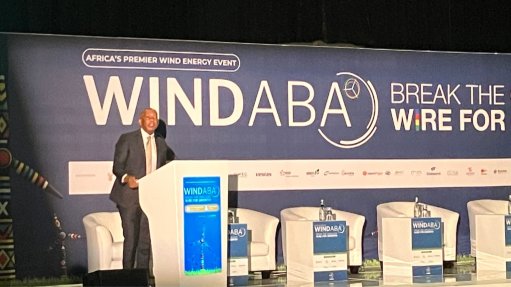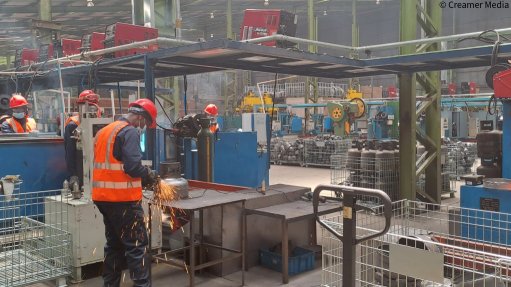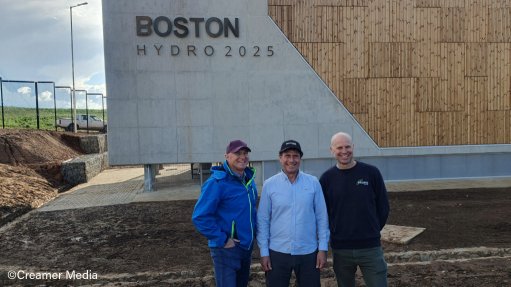There are signs of life in the local construction sector – CIDB
There are some green shoots in the South African construction industry, despite predictions that the sector is facing imminent collapse, says Construction Industry Development Board (CIDB) CEO Bongani Dladla.
“Next year will be a year of recovery, after the industry was hit by successive waves of adversity in recent times – a universal pandemic, a sharp economic downturn, ongoing energy woes, and a regional conflict which threatens to deliver long-term, global consequences.”
Construction is often a bellwether indicator of the health of the broader economy, even though it currently accounts for only about 3% of gross domestic product, says Dladla.
“If there is an uptick in construction activity, it may well lead to a recovery in other sectors such as manufacturing, retail and technology.”
Several recently published reports conclude that there is an upward trend in construction activity, which may have a ripple effect on the broader sector, including emerging contractors, black-owned and women-owned enterprises, notes Dladla.
The South African Construction Market Report, published by Construct Africa, projects that the industry will stabilise at a yearly average growth rate of 3% from 2023 to 2026.
This will predominantly be on the back of expected investment flowing from government’s R2.3-trillion infrastructure plan and the benefits flowing from the Economic Reconstruction and Recovery Plan, believes Dladla.
“The bulk of this spending will go towards catalytic public infrastructure projects in the fields of energy, transport, housing, and digital infrastructure. A construction project pipeline to the value of R340-billion has already been announced.”
The Afrimat Construction Index, published in September, is also cautiously optimistic, adds Dladla.
It reports that the construction sector increased the value added to the economy by 4.1% in real terms in the second quarter of the year.
This was achieved despite the negative impact of events such as loadshedding, the floods in KwaZulu-Natal and a sharply higher fuel price.
The index also notes increases in both the volume and value of construction material – leading indicators of future construction activities – and an increase in employment, which is expected to accelerate once infrastructure activities gain momentum.
The findings of these two reports match those of the CIDB’s own research conducted in partnership with the Bureau for Economic Research, says Dladla.
“Our most recent Small and Medium Enterprises Business Conditions Survey reflects an improved sentiment within the industry and an optimism that the coming period will deliver higher levels of construction activities and growth in profitability.”
Dladla says one of the biggest concerns raised in most recent reports and surveys pertains to underspending by infrastructure client departments at national, provincial, and metro levels, as well as within State-owned companies.
“It is of critical importance that the public sector improves its capacity to manage infrastructure projects under its control and addresses the lingering concerns within the industry about delays in the awarding of contracts, tardiness in implementation and late payment of contractors,” he says.
“It is also imperative that emerging contractors benefit from an upswing in construction activities.
“Public sector spending in the sector must create opportunities for new players to participate in major activities, improve their grading, and gain vital experience which will enable them to become eligible for future projects, service delivery and employment.”
Article Enquiry
Email Article
Save Article
To advertise email advertising@creamermedia.co.za or click here
Comments
Press Office
Announcements
What's On
Subscribe to improve your user experience...
Option 1 (equivalent of R125 a month):
Receive a weekly copy of Creamer Media's Engineering News & Mining Weekly magazine
(print copy for those in South Africa and e-magazine for those outside of South Africa)
Receive daily email newsletters
Access to full search results
Access archive of magazine back copies
Access to Projects in Progress
Access to ONE Research Report of your choice in PDF format
Option 2 (equivalent of R375 a month):
All benefits from Option 1
PLUS
Access to Creamer Media's Research Channel Africa for ALL Research Reports, in PDF format, on various industrial and mining sectors
including Electricity; Water; Energy Transition; Hydrogen; Roads, Rail and Ports; Coal; Gold; Platinum; Battery Metals; etc.
Already a subscriber?
Forgotten your password?
Receive weekly copy of Creamer Media's Engineering News & Mining Weekly magazine (print copy for those in South Africa and e-magazine for those outside of South Africa)
➕
Recieve daily email newsletters
➕
Access to full search results
➕
Access archive of magazine back copies
➕
Access to Projects in Progress
➕
Access to ONE Research Report of your choice in PDF format
RESEARCH CHANNEL AFRICA
R4500 (equivalent of R375 a month)
SUBSCRIBEAll benefits from Option 1
➕
Access to Creamer Media's Research Channel Africa for ALL Research Reports on various industrial and mining sectors, in PDF format, including on:
Electricity
➕
Water
➕
Energy Transition
➕
Hydrogen
➕
Roads, Rail and Ports
➕
Coal
➕
Gold
➕
Platinum
➕
Battery Metals
➕
etc.
Receive all benefits from Option 1 or Option 2 delivered to numerous people at your company
➕
Multiple User names and Passwords for simultaneous log-ins
➕
Intranet integration access to all in your organisation

















